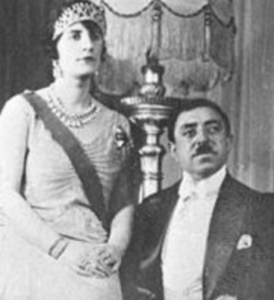The Pearl That Broke Its Shell | Behind the Story
This is a story I had to tell.
My parents were born and raised in Afghanistan in the 1950s and 60s, a time when things were much different for the country. My aunts graduated from college and my mother even traveled to Europe on scholarship to obtain her graduate degree in engineering. On our walls and dressers were faded pictures of aunts, uncles and grandparents – the women dressed in trendy skirts or bellbottoms and the men in wide-collared suits. Kebab shops played popular music and poetry was a part of everyone’s life.
It was hard for me to reconcile these images and impressions with what I saw on television or what I read in the newspapers. Women lost so much in the violent years that followed my parents’ emigration. For so many Afghans, there’s been a burning desire to express that what is seen today is not the whole story. Many of us want to shout from rooftops that our culture has been robbed and our women have been brutally stripped of their rights. Our girls, our young women, our future mothers have to fight, all over again, to be valued as part of society.
Afghanistan is home to a practice that demonstrates how sons are valued over daughters. Some families without sons will disguise a young daughter as a boy (known as “bacha posh”) for a multitude of reasons including elevating the family status and enabling the child to escort sisters outside the home. As I was preparing to write my story, I came across an article that talked about the bacha posh tradition and made mention of a time in Afghanistan’s past when a king used women dressed as men to guard his harem (trust issues?). Although done for entirely different reasons, I was fascinated by the concept of girls, generations apart, being dressed as boys in a country where gender is of ultimate consequence.
Decades of war and fundamentalist regimes have battered and scarred the women of Afghanistan. And the country is fraught with problems – child marriages, warlords, political unrest, drug addiction, corruption and more. I’ve woven these crises into this novel since they are part of the Afghan reality. I read anything I could find about women of Shekiba and Rahima’s generations. I spoke with friends and family members, women working with the Afghan Parliament. I learned of frustrations, heartbreaks and triumphs.
Rahima is a former bacha posh who is married off to a local warlord when she is barely an adolescent. She is the living legacy of her great-great-grandmother, Shekiba, and through the hardships she endures, she draws strength from this relationship. They share a common tenacity, a desire to survive despite everything. This tenacity is what I see changing the face of Afghanistan today and giving hope for tomorrow.
Ultimately, I wrote this story to share the experience of Afghan women in a fictional work that is made up of a thousand truths.
Rahima’s Afghanistan
Rahima lives in Afghanistan shortly after the fall of the Taliban regime. The Afghan people are recovering from its oppressive shadow. The government is struggling to gain control over its fragmented territories and warlords hold more control than the new leaders in the far-off capital. Corruption is rampant. The light of change is just starting to spread and for young girls, the opportunity for education still come with risk and hardship, even for families who are supportive.
To learn more about girls like Rahima:
Shekiba’s Afghanistan
Shekiba, Rahima’s ancestor, lives in Afghanistan in the early 20th century. The country is ruled by a monarchy, though regime changes happen often and violently. Peacetime was tenuous as the tensions of the Great Game still reverberated through the land. Kings were looking to the west and making efforts to modernize and empower Afghanistan. Infrastructure, foreign relations and education gained importance. Especially in the cities, life was changing for women as they gained more social mobility and opportunities for education, a shift in paradigm made possible by Afghanistan standing on its own two feet among western nations.
Follow the links to learn more about the historic characters we meet in Shekiba’s Afghanistan:
